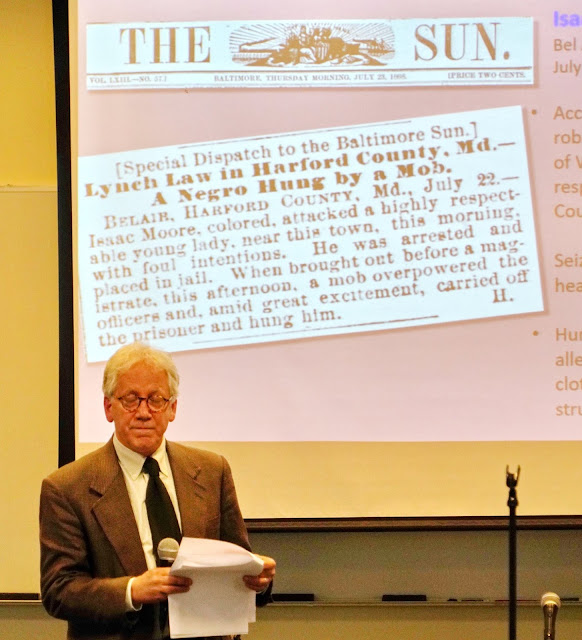Since early 2019, members of the Harford County Committee of the Maryland Lynching Memorial Project have been conducting research on racial terror lynchings in Harford County. There are three known, documented lynchings which occurred in Harford County, as well some unsuccessful lynching attempts. None of the men who were lynched were tried for their alleged crimes, nor was anyone ever charged for these mob killings. We are continuing our research efforts in order to find more details about these men's lives and the circumstances surrounding their deaths. We also hope identify and contact any descendants and offer them an opportunity to participate in our events and programs to honor and memorialize them.
Isaac Moore, July 22,1868
On July 22, 1868, an African American man named Isaac Moore was arrested for allegedly assaulting and robbing a young woman earlier in the day. Moore was seized by the mob that afternoon while being taken by the sheriff and his deputies to a hearing before the magistrate in the courthouse across the street from the jail. With a noose placed around his neck, the mob carried him almost a mile away to the site of the alleged attack on the Churchville Road near Bynum Run, and according to one account, “... hung him on a limb of a tree over the road perfectly naked, he having had his clothes torn off him in his desperate struggle to escape.”
Jim Quinn, October 2, 1869
On the night of October 2, 1869, a young 18 year old African American man named Jim Quinn was taken from a train in White Hall, Baltimore County, by a band of about 30 men on horseback as he was being transported to the county jail in Towsontown. He had been arrested after being accused of brutally assaulting an elderly woman named Miss Smith on September 28, when she was visiting friends near Jarresttville . The men who seized Quinn off the train claimed that they were taking him to the Harford County jail in Bel Air. Instead, according to an article in The Sun, “...he was taken to the Harford and Baltimore county line, where the lynchers hanged him to the first convenient tree without even the vaguest form of a trial.” His body was left hanging until about noon the next day, when it was cut down and buried in the neighborhood.
Lewis Harris, March 26, 1900
Late on the night of March 26, 1900, a 26 year old African American man named Lewis Harris was dragged from his jail cell and hanged by a lynch mob in Bel Air. He had been arrested and accused the day before of an assault on Miss Anne McIlvaine, a 57 year old woman who lived alone in a house on the edge of the town. Despite rumors that a lynching might occur, Harris was not moved to a jail in Baltimore for safekeeping. In front of a large crowd of onlookers, an armed band of around 20 men began firing on the sheriff’s house at around 10 PM. Two men in the crowd were wounded in the the attack. During the gunfight another group went around back to the jail, broke down the door, and located Harris. He was taken to the gates of the Archer mansion on the edge of town, where he was hanged from a tree and then shot. An inquest performed the next day determined that he died “at the hands of persons unknown .” No one was ever held accountable for the lynching.
















